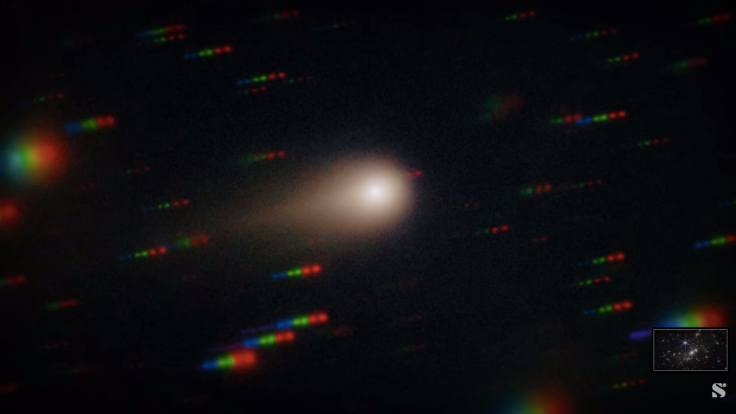
Astronomers are captivated by the interstellar object 3I/Atlas, which continues to challenge scientific understanding with its rapidly lengthening tail and strange radio emissions. As the object nears its closest approach to Earth, researchers are racing to determine whether its unusual features stem from natural cosmic forces or something never before observed.
3I/Atlas Tail Growing Faster Than Expected
Interstellar comet 3I/ATLAS exhibits a bright, extended ion tail while releasing gas and dust as it travels through the inner solar system. pic.twitter.com/hYGELxZxx2
— ADS (@ADS69635721) November 12, 2025
Recent telescope imagery reveals that 3I/Atlas's tail has expanded dramatically in a short time, surpassing initial projections and sparking new theories about its composition. The tail's bright, elongated form suggests that volatile materials are escaping at a rate unseen in typical comets.
Scientists using the Hubble and James Webb telescopes have noted shifts in both the colour and density of the ejected gas and dust, indicating that the object may be experiencing intense solar interaction as it moves deeper into the inner Solar System.
Unlike most known comets, whose tails grow steadily and predictably as they heat up, 3I/Atlas seems to respond erratically to solar radiation. Astronomers have speculated that the object's surface may contain exotic compounds or metallic elements that react differently under extreme heat.
Others suggest that its rapid disintegration may stem from structural weaknesses developed over its long journey between star systems. Regardless of the cause, the event provides a rare opportunity to study an interstellar visitor undergoing such visible transformation in real time.
A Signal That Defies Explanation

Adding to the mystery, several observatories have reported detecting a faint but consistent radio signal coming from the vicinity of 3I/Atlas. First confirmed in early November, the signal's unusual frequency pattern differs from known natural emissions such as those produced by solar wind interactions or background cosmic radiation. While most experts caution against attributing the phenomenon to artificial origins, the discovery has reignited debate about the nature of interstellar objects and their potential to carry unknown properties.
Teams across Europe, North America and Asia are now conducting independent analyses of the radio data to rule out instrumental interference or coincidental alignment with other celestial sources. The challenge lies in isolating the signal's true origin amid the vast electromagnetic noise of space.
Some researchers believe that the emission could be caused by charged particles trapped within the comet's magnetic field, while others suspect that it may reflect a resonance effect as 3I/Atlas passes through varying solar plasma densities. Whatever the explanation, the object's behaviour has forced astronomers to reconsider established assumptions about how interstellar matter interacts with radiation.
Anticipation Builds as 3I/Atlas Nears Earth
3I/ATLAS is an interstellar comet, noted for its unusual characteristics. With deepfake AI videos of me making claims on this subject, I appeared on @NewsNation to offer my official authentic assessment of this strange space object. #3IATLAS pic.twitter.com/BJDE65X7u1
— Dr. Michio Kaku (@michiokaku) November 10, 2025
According to NASA and other space agencies, 3I/Atlas will reach its closest point to Earth later this month, though it poses no threat of impact. The event will provide an exceptional viewing opportunity for both professional and amateur astronomers as the comet becomes more visible in the night sky.
Researchers hope to capture high-resolution spectral data to better understand its chemical composition, while astrophysicists aim to model how its trajectory might reveal clues about its origin beyond the Solar System. Comparisons have already been made to previous interstellar visitors such as ʻOumuamua and 2I/Borisov, but 3I/Atlas appears distinct in both structure and activity.
Its unstable tail, fluctuating brightness and puzzling radio output have set it apart as one of the most scientifically intriguing objects of the decade. Some experts believe that its study could help clarify how matter is exchanged between star systems, contributing to theories about the evolution of cosmic dust and the building blocks of planets.
As 3I/Atlas continues its swift journey past Earth, it leaves behind a trail of scientific curiosity and unanswered questions. Whether its peculiarities prove to be natural or something beyond current comprehension, the interstellar traveller has already expanded the boundaries of human knowledge and reminded astronomers how little is truly known about what lies between the stars.







